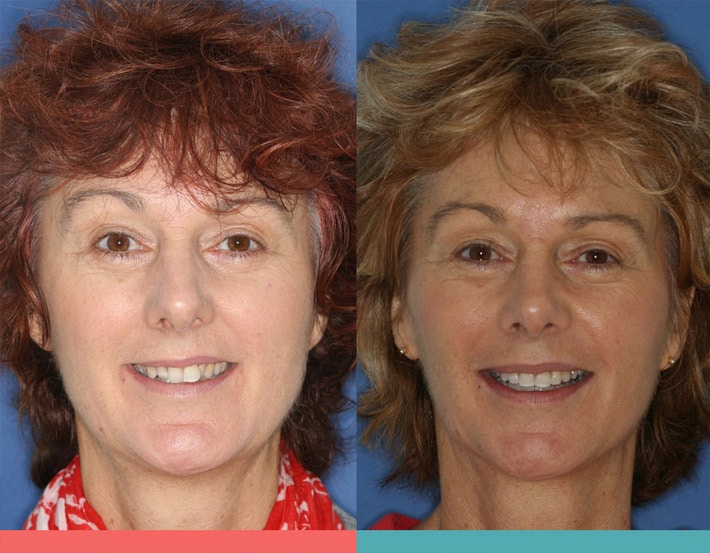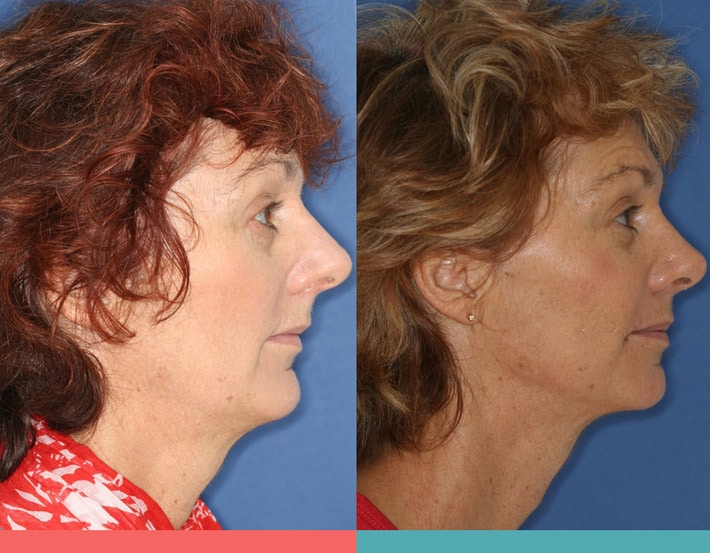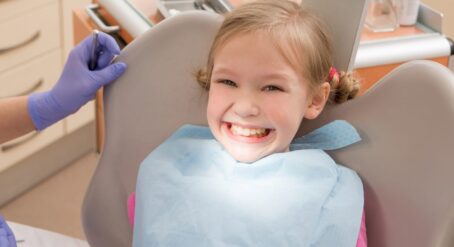Most people might think an orthodontist focuses on making teeth straight and fixing bad bites. But did you know that, in addition to a general dental degree, orthodontists train for three years in a number of specialty areas including facial growth and development. A highly-skilled orthodontist can correct crooked teeth, gappy teeth, overbites, underbites, crossbites and other orthodontic issues very subtly – including your facial appearance.
Do braces actually improve facial symmetry?
Yes they can! In many cases, improved facial alignment and symmetry are simply one of the positive side effects of having the teeth and bite realigned. However, in some cases, facial profile enhancements are actually part of the treatment objectives, and the end result (what your smile and face will look like) can often be predicted during your consultation – allowing you to commence treatment with absolute confidence.
Orthodontists manage the developing teeth and faces of young children and adolescents, as well as adults who have long since stopped growing. The way each of these different age groups is treated is strongly influenced by underlying facial growth (or lack thereof).
Pre-adolescent treatment
Children between the ages of 7-10 with obvious dental problems should be seen by an orthodontist to assess whether early intervention is needed to correct problems such as crossbites or overbites.
Habit elimination to stop thumbsucking is also vital at this age, as thumb and finger sucking can push the teeth forward and significantly change the shape of the developing jaw. Chronic mouth breathing and snoring/sleep apnoea can also impact on developing teeth and jaws, and are often signs that the child would benefit from an early orthodontic assessment.
This initial phase is critical in assessing problem areas at an early age and can often reduce the need for further treatment down the track.
Not all children will need pre-adolescent interceptive orthodontic treatment, but an early assessment is important to ensure the relevant diagnostic information and treatment options are discussed in detail.
While orthodontists will always do their best to enhance a child’s face and jaw growth, they will also ensure parents are given realistic expectations as to what can be achieved in this early stage of treatment.
It’s also important to note that while a referral from a dentist isn’t required to see an orthodontist, most general dentists will refer patients to a specialist orthodontist for assessment (patients are also encouraged to continue seeing their dentist for check-ups and cleaning throughout their orthodontic treatment).
Adolescent treatment
Once teenagers have their full set of adult teeth, treatment options such as braces can be considered when necessary. This type of ‘traditional’ orthodontic treatment is usually required to achieve ideal dental alignment and facial balance.
Adolescents who have protruding, crooked, crowded or gappy teeth are great candidates for braces, which can bring about very subtle changes in the facial profile and restore symmetry whilst simultaneously creating a beautiful smile.
While braces are an effective form of treatment for adolescents, the rapid growth and change that orthodontists see during this period also allows them the opportunity to influence facial growth and function in other ways, too.
Adult treatment
With advances in technology there is now a range of treatments available for adults requiring orthodontic treatment – including clear or tooth coloured braces, clear aligners (such as Invisalign®, Spark® and 3M Clarity®), and lingual (inside) braces.
For severe jaw and facial imbalances, orthodontists will work with other specialists (such as oral and maxillofacial surgeons) to form an expert team that can achieve dramatic, life changing cosmetic and functional improvements for adult patients.
Orthodontists will always recommend treatments that will enhance their patients face and smile, and any dental extractions or jaw surgeries are always carefully considered. Although most improvements can be achieved through non-surgical, routine orthodontic treatment, the more severe facial imbalances may also require some form of jaw surgery.
When it comes to assessing treatment options for yourself or your children, it’s essential that you get advice from a specialist orthodontist. After all, orthodontists dedicate all day, every day to aligning jaws and teeth – so you can rest assured that any possible changes in facial appearance will be positive!


Images supplied with patient permission from Carousel Orthodontic Centre










